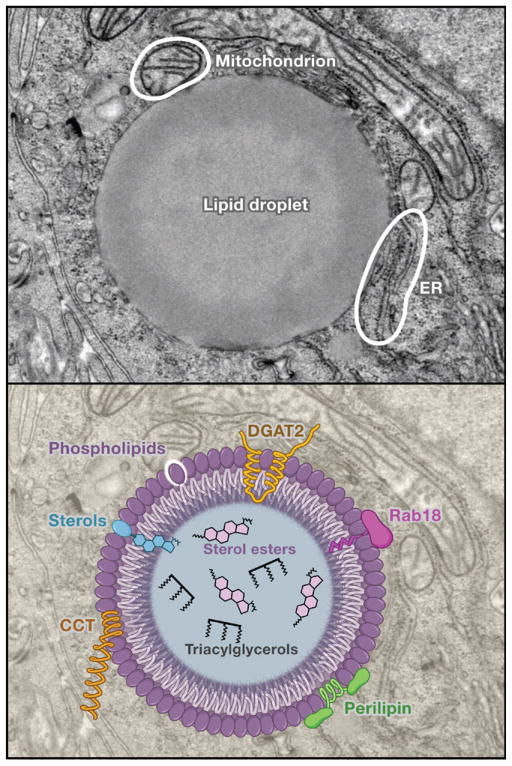Figure 1. Anatomy of a Lipid Droplet.
(Top) An electron micrograph of a lipid droplet in a cultured hepatoma cell. The membrane monolayer surrounding the lipid droplet is visible, as are close associations with mitochondria and ER membranes. (Bottom) The structural features of a lipid droplet. Shown are polar surface lipids of the monolayer (e.g., phospholipids and sterols), the nonpolar lipids of the core (e.g., sterol esters and triacylglycerols), and a variety of proteins decorating the surface of the droplet. These proteins include DGAT2, Rab18, perilipin, and CCT (CTP:phosphocholine cytidylyltransferase; the rate-limiting enzyme in phosphatidylcholine synthesis). Several hypothetical mechanisms for how proteins interact with the lipid droplet are shown, including amphipathic α helices, embedding of hydrophobic regions directly in the droplet, and lipid anchors. (Electron micrograph courtesy of S. Stone and J. Wong; image reprinted from Biochim. Biophys. Acta 1791, T.C. Walter and R.V. Farese, Jr. (2009), with permission from Elsevier.)

